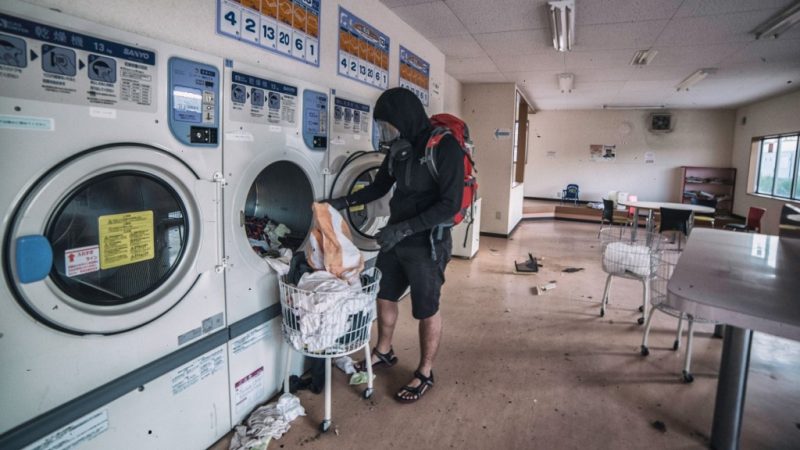Have you ever considered what you would do in a dire situation, such as when you desperately needed to call 911 from your cell phone but discovered that you had no signal?
To say things are getting worse is an understatement! It is difficult to envision what life would be like without our cell phones, not the least of which is the fact that they make rapid and dependable communication during times of crisis possible.
But this is something that needs to be resolved once and for all: is it possible to call 911 even when there is no signal?
If your phone is showing that it has no signal, you can still call 911 as long as there are other usable towers within range. If you activate the function on your phone that lets you make an emergency call, it will be able to access and transmit over the towers of any other nearby carriers.
The knowledge of that undoubtedly provides some solace. The fact that your phone is displaying the message “no signal” does not mean that it actually has no signal at all; rather, it almost always indicates that you are located in an area where none of your carrier’s towers are within range. That’s some interesting stuff, isn’t it? Keep reading and we’ll tell you a whole lot more.
- Can you contact 911 if you don't have cellphone signal?
- How Do Cell Phones and Networks Communicate?
- The absence of a signal almost always denotes the absence of authorization
- Emergency Calling Functions Override Network Lockouts
- In the Extreme Unlikely Event That You Have Signal, You Will Be Unable to Contact Emergency Services...
Can you contact 911 if you don’t have cellphone signal?
Even if there are “no bars,” it’s likely that your phone is still receiving a signal.
To begin, let’s debunk a widely held belief: in order for your phone to receive a signal, it is not necessary for there to be any bars.
What? How? The term “bars” refers to a simple measurement of signal strength that is used by your phone to provide you with an overall idea of how strong or weak the connection is with the nearest tower that is approved on your network.
If the connection with the approved tower is tenuous or if there are issues with the tower it is trying to connect to, your phone may only show one flickering bar even though it may have a full signal strength with another tower that is not part of your network. This can happen if the tower it is trying to connect to is experiencing problems.
In point of fact, your phone is constantly communicating with all of those towers in the neighborhood for a variety of reasons. These include handing off the call to another tower if you move out of range of one tower, checking for a stronger signal, and other similar reasons.
Therefore, when your phone displays “no bars” or “no service,” it actually just means that the towers belonging to your carrier are out of range; it does not necessarily mean that there is no signal at all in any way, shape, or form. This is very significant, and you will understand why in just a moment.
How Do Cell Phones and Networks Communicate?
It is helpful to have an understanding of how your phone communicates with cell phone towers in order to gain a deeper comprehension of this surprisingly complex system of communications.
Radio waves carry the information from your phone to the closest cell tower whenever you make a call or use data on your phone.
That tower then sends the information over landlines or fiber optic cables to the telephone company’s switching center.
From that point on, it will be transferred to the called party, whether that is the phone of another individual or a 911 dispatcher.
When you get a call, the same thing happens: a signal is sent from the switching center through the networks and lines to the closest cell tower, which then sends it to your phone using radio waves. This process happens every time you get a call.
We now understand that our mobile phones are essentially just highly developed two-way radios that communicate with each other and with towers that are themselves highly developed using radio waves.
If you know anything about more traditional radio systems, you know anyone can send and receive, and listen in, at pretty much any time if they are on the right frequency.
It seems reasonable that our mobile phones should be able to connect to any tower that is in the vicinity, doesn’t it? So why aren’t they able to?
The absence of a signal almost always denotes the absence of authorization
The issue is not that your phone is unable to communicate on other towers; rather, the issue is that doing so is strictly prohibited.
You see, each network or carrier has an agreement with each tower owner in the areas they service to use their towers for their cell phone traffic.
Therefore, despite the fact that a Sprint phone could easily connect to a Verizon tower, customers are not permitted to do so unless they have received prior authorization.
The only time this should occur is if you have the feature known as “roaming” enabled on your phone and you are making or receiving a call while you are in a location that is not your usual coverage zone or your home area.
Even if you have roaming turned off, there are certain situations in which your phone might still connect to the towers of a different carrier automatically. However, this typically only occurs for functions that do not involve voluntarily sending signals over the network, such as sending a text message, email, or making a phone call, among other things.
For instance, your phone may automatically ping a tower in order to register its presence in advance in case it becomes able to transmit at a later time. This is done in case it will be able to do so in the future.
However, under specific circumstances, which we will discuss in a moment, your phone will be able to send an emergency message over these non-network towers immediately in the event of a crisis.
Emergency Calling Functions Override Network Lockouts
Since we now know that your phone can still receive a signal even when it indicates that it has “no bars,” the next question that naturally arises is whether or not you can use the tower of another carrier to place an emergency call. The correct response is “yes”
Your phone will not be able to send or receive data over any tower that is not a part of the network that is provided by your carrier in the vast majority of instances. This lockout can be bypassed, however, by certain emergency functions that are available.
For instance, the law in the United States mandates that all mobile phones must be able to connect to the emergency services number 911. This is the case even if the user does not have access to a networked tower and even if they do not have an active service plan. This functionality is built into the phones themselves.
You are still able to dial 911 (or press the emergency call button) and connect with a dispatcher at a nearby center who can send assistance even if your phone does not have any signal bars and appears to have no service.
There are other emergency numbers that function even when your typical network coverage is unavailable, but the specifics of these numbers change depending on where you are in the world.
In the Extreme Unlikely Event That You Have Signal, You Will Be Unable to Contact Emergency Services…
What takes place, then, in the event that the phone does not receive any signal at all, whether it be zero bars, no service, or not even a stray radio wave?
In that case, you won’t be able to use your phone to dial 911: inability to reach a tower means no ability to communicate, period. Even when things are as bad as they can get.
This demonstrates that despite the wondrous capabilities of modern cell phones, they are not infallible. Regardless of whether or not you have signal, you should never count on them as your sole method of communication or assistance in a dangerous situation.
When you are traveling outside of your normal area, however, there are things you can do to increase the likelihood that you will be able to place an emergency call if you need to. These things can be done regardless of where you are.
Signal maps can be obtained that show the expected coverage of all cellular phone towers in a given region.
You might also want to think about purchasing a dedicated cell phone antenna that either attaches to your vehicle or can even be installed on the phone itself in order to improve its reception and broadcast capabilities.
An external antenna almost always provides a significant improvement in range in comparison to the built-in antenna found on a mobile device.






